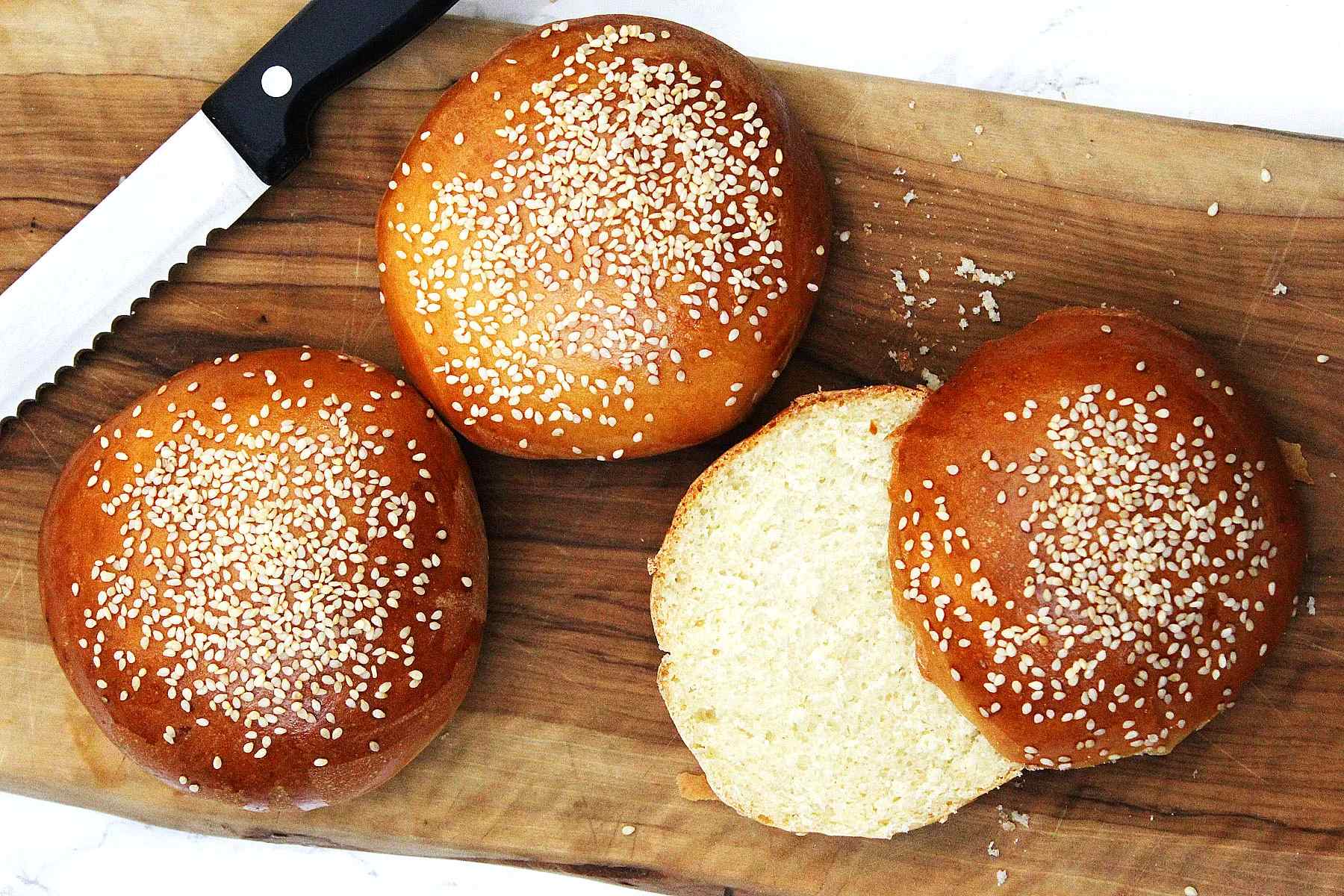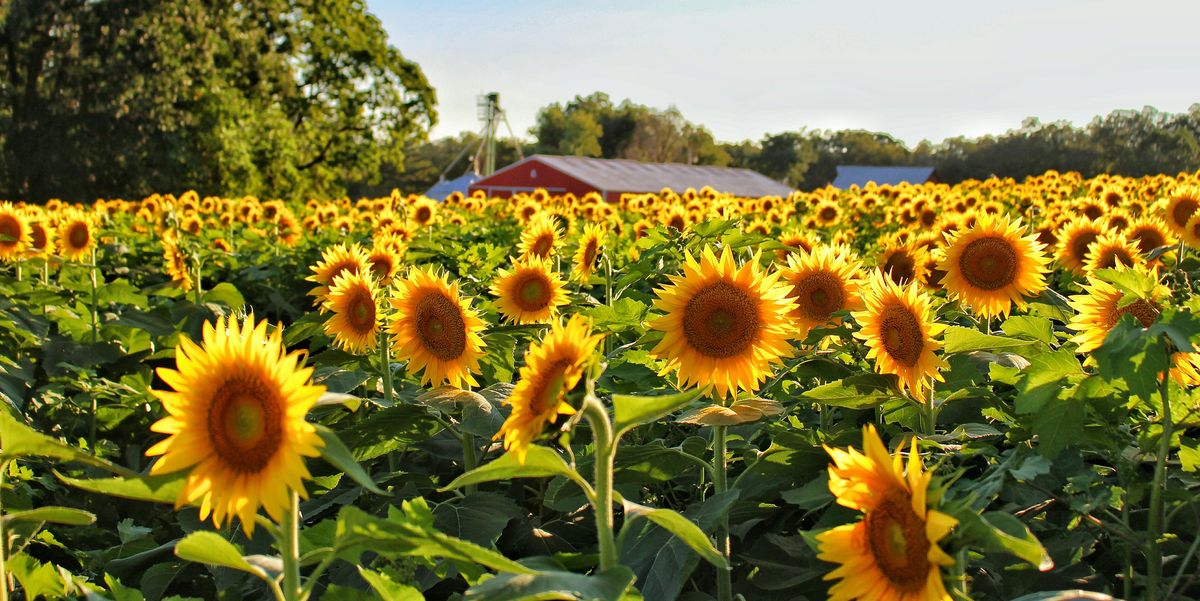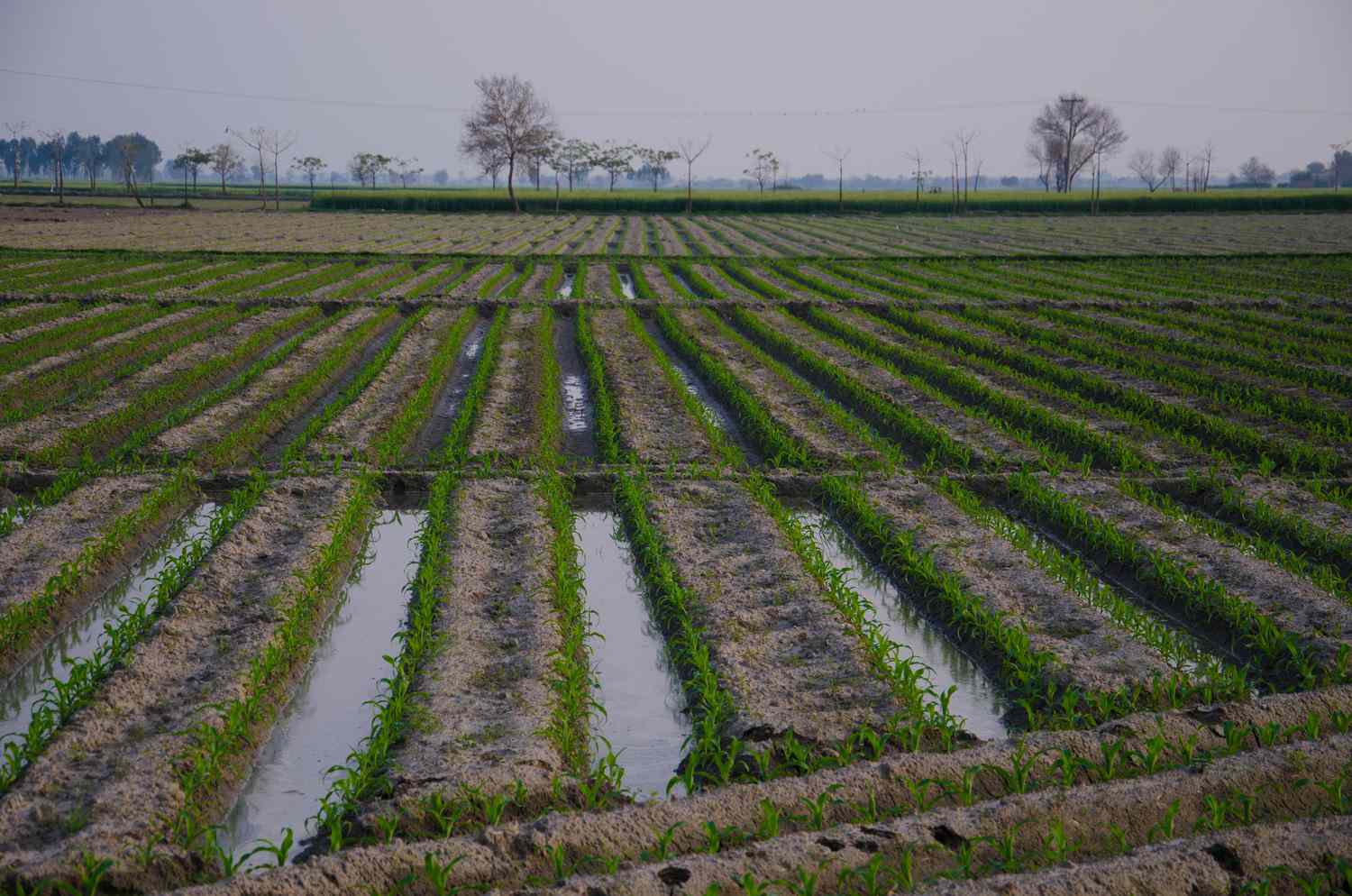Home>Gardening News and Trends>Latest News>Why Are Sesame Seeds On Buns


Latest News
Why Are Sesame Seeds On Buns
Modified: January 22, 2024
Discover the latest news on why sesame seeds are commonly found on buns. Explore the benefits and significance of this popular culinary addition.
(Many of the links in this article redirect to a specific reviewed product. Your purchase of these products through affiliate links helps to generate commission for Chicagolandgardening.com, at no extra cost. Learn more)
Table of Contents
- Introduction
- History of Sesame Seeds on Buns
- Culinary Uses of Sesame Seeds on Buns
- Nutritional Benefits of Sesame Seeds on Buns
- Cultural Significance of Sesame Seeds on Buns
- Variations and Regional Differences in Sesame Seed Buns
- Industrial Production and Commercial Availability of Sesame Seed Buns
- The Sesame Seed Industry
- Common Misconceptions About Sesame Seeds on Buns
- Conclusion
Introduction
Sesame seeds on buns have become a common sight in the culinary world. These tiny and flavorful seeds have been popping up on various baked goods, adding a delightful crunch and nutty taste. From hamburgers to bagels, sesame seed buns have become a staple in many cuisines.
But why are sesame seeds on buns so popular? What is the history behind this culinary trend, and what are the nutritional benefits of incorporating sesame seeds into our diets? In this article, we will dive into the fascinating world of sesame seeds on buns, exploring their culinary uses, cultural significance, and more.
For centuries, sesame seeds have been treasured for their unique flavor and nutritional value. Originating from East Africa, these seeds were introduced to various parts of the world through trade routes, gaining popularity in Ancient Mesopotamia, Egypt, and India. Today, sesame seeds are cultivated in many countries, including China, India, Sudan, and Myanmar.
When it comes to culinary uses, sesame seeds on buns add a distinct texture and flavor. The seeds are often sprinkled on top of bread dough before baking, creating a beautiful golden crust and a crunchy bite. The nutty taste of sesame seeds pairs perfectly with a wide range of ingredients, making them a versatile addition to savory and sweet dishes.
Aside from their culinary appeal, sesame seeds are also packed with nutrients. They are an excellent source of protein, healthy fats, vitamins, and minerals. These tiny seeds are rich in calcium, iron, magnesium, and zinc, making them a valuable ingredient to promote bone health and metabolism. Moreover, sesame seeds contain antioxidants and phytosterols, which have been linked to reducing inflammation and supporting heart health.
Beyond their nutritional benefits, sesame seeds on buns hold cultural significance in various regions. In Asian cuisines, such as Chinese and Japanese, sesame seeds are associated with good luck and prosperity. In Middle Eastern cultures, sesame seeds are a key ingredient in tahini and halva, traditional sweets enjoyed during special occasions.
As sesame seeds on buns gained popularity, regional variations and adaptations emerged. In the United States, sesame seed buns are commonly used for hamburgers, adding a touch of crunch and enhancing the overall taste. In Asia, black sesame seed buns are a popular choice for steamed buns, providing a striking visual contrast.
With their rising popularity, the industrial production and commercial availability of sesame seed buns have also increased. Many bakeries and fast-food chains now offer sesame seed buns as a standard option for sandwiches and burgers, catering to the growing demand for these flavorful buns.
History of Sesame Seeds on Buns
The use of sesame seeds on buns can be traced back to ancient times. Sesame seeds have a long and rich history, with evidence of their cultivation dating back more than 4,000 years. Originating from East Africa, sesame seeds were highly valued for their oil content and nutritional properties.
Ancient civilizations recognized the versatility of sesame seeds and incorporated them into their diets. In ancient Egypt, sesame seeds were used as both a food source and a medicine. The Egyptians believed that sesame seeds held powerful healing properties and used them in remedies to treat various ailments.
From Egypt, sesame seeds made their way to the Middle East and Asia through trade routes. The cultivation and consumption of sesame seeds spread across regions, with each culture adding its own unique touch to the culinary use of these tiny seeds.
In the Middle East, sesame seeds gained prominence and became a staple ingredient in their cuisine. Tahini, a paste made from ground sesame seeds, became a popular condiment that is still widely used today. Sesame seeds were also incorporated into traditional Middle Eastern sweets, such as halva, giving them a distinct nutty flavor and texture.
In Asian cuisines, particularly Chinese and Japanese, sesame seeds held cultural significance. In Chinese culture, sesame seeds were known for their symbolic meaning of good luck and prosperity. They were often used as an ingredient in festive dishes served during celebrations and important events.
During the Tang Dynasty in China, sesame seeds found their way onto buns, especially for steamed buns known as mantou. The addition of sesame seeds not only enhanced the flavor and texture of the buns but also provided a visual appeal with a sprinkle of black sesame seeds on the golden buns.
In Japan, sesame seeds were widely used in traditional dishes such as sushi and ramen. The nutty flavor and crunchy texture of sesame seeds added depth to these dishes, making them more flavorful and enjoyable.
As time went on, sesame seeds on buns became increasingly popular worldwide. In the 20th century, with the rise of fast-food chains and the widespread popularity of hamburgers, sesame seed buns became the standard option for burger buns. The sesame seeds added not only a pleasant crunch but also a unique taste to the burger, making it a more satisfying and flavorful culinary experience.
Today, sesame seed buns are a common sight in bakeries, restaurants, and homes around the world. Whether it’s a sesame seed hamburger bun, a bagel with sesame seeds, or a bun for a sandwich, these buns have become a beloved choice for their taste, texture, and cultural significance.
Culinary Uses of Sesame Seeds on Buns
Sesame seeds on buns have become a popular choice in various cuisines due to their unique flavor and texture. The culinary uses of sesame seeds on buns are vast and diverse, offering not only an appealing visual appeal but also enhancing the overall taste of the dishes they accompany.
One of the most common culinary uses of sesame seeds on buns is in hamburger buns. The addition of sesame seeds on top of the bun creates a beautiful golden crust and adds a delightful crunch with every bite. The nutty flavor of the sesame seeds pairs perfectly with the savory meat patty, creating a mouthwatering combination that has become a classic in the realm of burgers.
Sesame seed buns are also widely used in other sandwich preparations. Whether it’s a chicken sandwich, a pulled pork sandwich, or a vegetarian sandwich, sesame seed buns provide an extra layer of flavor and texture. The seeds on the bun add a pleasant crunch and a toasted aroma that elevates the overall experience of consuming a sandwich.
Bagels with sesame seeds are another beloved culinary use of sesame seeds on buns. The dense and chewy texture of a bagel, combined with the slight crunch of the sesame seeds, creates a delightful contrast that enhances the enjoyment of this classic breakfast or snack item. The nutty flavor of the sesame seeds complements the rich flavors of cream cheese, lox, or any other desired toppings.
In Asian cuisines, sesame seed buns are a staple. From steamed buns to baozi filled with various ingredients like pork, beef, or vegetables, sesame seeds on top of the bun add visual appeal and a savory element. The black sesame seeds, in particular, are often used in Asian cuisine, creating a striking contrast against the pale exterior of the buns.
Beyond savory dishes, sesame seeds on buns are also incorporated into sweet treats. In baking, sesame seed buns are used as a base for various pastries and rolls. The sesame seeds not only enhance the flavor but also add an interesting texture to the baked goods, making them more enjoyable.
Furthermore, sesame seeds are a key ingredient in many traditional Middle Eastern and Mediterranean desserts. Halva, a sweet confection made from sesame seeds and sugar or honey, is a popular treat enjoyed during special occasions. The nutty flavor and grainy texture of sesame seeds give halva its distinct taste and mouthfeel.
In summary, the culinary uses of sesame seeds on buns are far-reaching and diverse. Whether it’s the classic sesame seed hamburger bun, the sesame seed bagel, or the sesame-studded steamed bun, these buns add a delightful crunch, a nutty flavor, and visual appeal to a wide array of dishes, creating an enhanced culinary experience for those who enjoy them.
Nutritional Benefits of Sesame Seeds on Buns
Sesame seeds on buns not only add a delightful crunch and nutty taste to various dishes but also bring a wealth of nutritional benefits to the table. These small but mighty seeds are packed with essential nutrients that can contribute to a well-balanced and healthy diet.
One of the main nutritional benefits of sesame seeds is their rich protein content. Protein is an essential macronutrient that plays a crucial role in building and repairing tissues, supporting immune function, and maintaining overall health. Including sesame seeds on buns can be especially beneficial for individuals following vegetarian or vegan diets, as it provides an additional source of plant-based protein.
In addition to protein, sesame seeds are a good source of healthy fats, including monounsaturated and polyunsaturated fats. These fats are known to support heart health by reducing bad cholesterol levels. The presence of omega-3 and omega-6 fatty acids in sesame seeds is particularly beneficial for brain function, reducing inflammation, and supporting overall well-being.
Sesame seeds are also rich in essential minerals like calcium, iron, magnesium, and zinc. These minerals are vital for various bodily functions, including bone health, oxygen transportation, nerve conduction, and immune system support. Incorporating sesame seeds on buns can be an excellent way to boost your intake of these essential minerals.
Furthermore, sesame seeds are a good source of dietary fiber. Fiber plays a crucial role in maintaining a healthy digestive system, promoting regular bowel movements, and preventing constipation. It also aids in maintaining a healthy weight, managing blood sugar levels, and reducing the risk of chronic diseases such as heart disease and diabetes.
Another notable nutritional benefit of sesame seeds is their antioxidant content. Antioxidants help protect the body against oxidative stress and prevent damage caused by free radicals. Sesame seeds contain various antioxidants, such as sesamol and sesamin, which have been shown to have anti-inflammatory and cholesterol-lowering properties.
It is important to note that while sesame seeds offer numerous nutritional benefits, they should be consumed in moderation, as they are calorie-dense. Adding a modest amount of sesame seeds on buns can provide a nutritional boost without significantly impacting daily caloric intake.
Incorporating sesame seeds on buns can be a simple and delicious way to amp up the nutritional value of your meals. From providing a good source of protein and healthy fats to essential minerals and antioxidants, these tiny seeds can contribute to a well-rounded and nutritious diet.
Cultural Significance of Sesame Seeds on Buns
Sesame seeds on buns hold significant cultural importance in various regions around the world. These tiny seeds have been used in culinary traditions for centuries and have become symbols of luck, prosperity, and tradition in different cultures.
In Asian cuisines, particularly Chinese and Japanese, sesame seeds on buns are deeply ingrained in cultural practices. In Chinese culture, sesame seeds symbolize good luck and prosperity. They are often used in festive dishes during celebrations like Chinese New Year and weddings. The inclusion of sesame seeds on buns during these special occasions is believed to bring blessings and abundance to those who consume them.
Japanese culture also places culinary significance on sesame seeds. In Japanese cuisine, sesame seeds are known as goma and have a long history of incorporation in traditional dishes. Sesame seeds are commonly added to rice balls, salads, and sauces, enhancing the flavor and adding a delightful texture. Additionally, black sesame seeds are often used in Japanese desserts, such as mochi and wagashi, which are enjoyed during tea ceremonies and special occasions.
Similarly, in Middle Eastern cultures, sesame seeds hold cultural significance. In countries like Syria, Lebanon, and Saudi Arabia, sesame seeds are widely used in traditional foods. For example, tahini, a paste made from ground sesame seeds, is a staple in Middle Eastern cuisine. It is used as a condiment, a base for dips like hummus, and as an ingredient in dishes like falafel.
In Jewish culture, sesame seeds hold spiritual and religious importance. Sesame seeds are used as a topping on challah bread, a braided bread traditionally eaten on Shabbat and other Jewish holidays. The sesame seeds on the challah symbolize the “manna” that was provided to the Israelites during their forty years in the desert, as described in the Torah.
The cultural significance of sesame seeds on buns extends beyond their culinary use. In some cultures, sesame seeds are believed to have medicinal properties and are used in traditional remedies. For example, in Ayurvedic medicine, sesame seeds are used to balance doshas and promote overall well-being.
Overall, sesame seeds on buns play an integral role in cultural traditions and practices around the world. They are more than just a culinary ingredient; they are symbols of luck, prosperity, tradition, and even spirituality. Incorporating sesame seeds on buns not only adds flavor and texture but also connects us to the rich cultural heritage associated with these tiny seeds.
Variations and Regional Differences in Sesame Seed Buns
Sesame seed buns are a global culinary phenomenon, and as such, they have undergone various adaptations and regional differences in different parts of the world. From the type of seeds used to the method of baking, these variations add diversity and unique flavors to sesame seed buns.
In the United States, sesame seed buns have become synonymous with hamburgers. The classic American sesame seed hamburger bun is typically soft and fluffy, with a generous sprinkle of sesame seeds on the top. These buns add a satisfying crunch and nutty flavor to the iconic American sandwich, enhancing the overall taste experience.
Asian countries, particularly China and Japan, have their own take on sesame seed buns. In China, steamed buns known as mantou are often topped with white or black sesame seeds. These buns can be enjoyed plain or filled with various savory or sweet fillings, such as pork, vegetables, or red bean paste. The sesame seeds on top provide a visual contrast and a burst of nutty flavor.
In Japan, black sesame seed buns are a popular variation. These buns have a distinctive appearance due to their black color, achieved by using black sesame seeds in the dough. The black sesame seeds add an earthy flavor to the bun and make it visually striking. These buns are often used for steamed buns and are enjoyed with various fillings, such as meat or vegetables.
Middle Eastern cuisine also offers its own variations of sesame seed buns. In countries like Lebanon and Syria, sesame seed buns, known as kaak, are commonly found. These buns can be round or elongated and are often topped with a generous sprinkle of sesame seeds. Kaak is enjoyed on its own as a snack or used as a vessel for spreads, such as labneh or za’atar.
When it comes to sweet variations, sesame seed buns are not limited to savory dishes. In many Asian cultures, particularly in China, sesame seed buns are filled with sweet ingredients like red bean paste or lotus seed paste. These filled buns, known as dou sha bao or lian rong bao, have a slightly sweet dough that complements the richness of the filling. The sesame seeds on the top provide a delightful textural contrast.
Regional differences in sesame seed buns also extend to their size and shape. In Western countries, sesame seed buns are commonly found in either hamburger bun form or as smaller buns for sliders or sandwiches. In contrast, in Asian countries, sesame seed buns can vary in size and shape, from the small and round buns used for dim sum to larger steamed buns.
The variations and regional differences in sesame seed buns offer a wide range of choices and flavors. Whether it’s the classic sesame seed hamburger bun in the United States, the black sesame seed buns in Japan, or the filled sesame seed buns in China, these variations showcase the incredible versatility of sesame seeds in global cuisine.
Industrial Production and Commercial Availability of Sesame Seed Buns
The industrial production and commercial availability of sesame seed buns have significantly increased with the growing popularity of these buns in the culinary world. Today, sesame seed buns can be found in numerous bakeries, fast-food chains, supermarkets, and restaurants around the globe.
The production of sesame seed buns on an industrial scale involves meticulous processes to ensure consistent quality and flavor. Bakers carefully select the sesame seeds, which are then cleaned, sorted, and roasted to enhance their flavor and aroma. Once the sesame seeds are ready, they are applied to the buns using specialized machinery.
Commercially available sesame seed buns meet the demands of consumers who seek the familiar taste, texture, and appearance of these buns. They are sought after for their aesthetic appeal, the delightful crunch provided by the sesame seeds, and the nuanced flavor that enhances the overall taste experience of a sandwich or burger.
Fast-food chains play a significant role in popularizing sesame seed buns. Many of these chains feature sesame seed buns as a standard option for their burgers and sandwiches, providing customers with a consistent and recognizable taste. The availability of sesame seed buns in fast-food establishments ensures that consumers can enjoy the familiar combination of flavors and textures that these buns offer.
Both small-scale and large-scale bakeries have also embraced sesame seed buns due to their popularity. These buns can be found in artisan bakeries that strive to create high-quality bread with unique flavors. Additionally, commercial bakeries produce sesame seed buns in large quantities to meet the demand of supermarkets and food service outlets.
The commercial availability of sesame seed buns has made it easier for individuals to incorporate these buns into their daily meals. Whether one wants to make a homemade burger or enjoy a grab-and-go sandwich, finding sesame seed buns in supermarkets allows for convenience and accessibility.
Furthermore, sesame seed buns have become a popular choice for catering services and restaurants. They are considered a versatile option that can be used for a range of dishes, from classic burgers to gourmet sandwiches. The visual appeal and unique flavor of sesame seed buns add a touch of sophistication to these culinary offerings.
Sesame seed buns have also become a staple in the frozen food section of supermarkets. These frozen buns allow consumers to stock up and enjoy sesame seed buns at their convenience. The availability of frozen sesame seed buns makes it possible for individuals to recreate the restaurant-style experience in the comfort of their own homes.
In summary, the industrial production and commercial availability of sesame seed buns have made these buns widely accessible to consumers. Whether through fast-food chains, bakeries, supermarkets, or online retailers, sesame seed buns have become a common and beloved option for those seeking the distinctive crunch and nutty flavor these buns provide.
The Sesame Seed Industry
The sesame seed industry plays a crucial role in meeting the demand for sesame seeds, including those used for sesame seed buns. As the popularity of sesame seeds continues to rise, the industry has experienced significant growth, catering to both domestic and international markets.
Sesame seeds are predominantly produced in countries such as China, India, Sudan, and Myanmar. These countries have favorable climates and ideal growing conditions for sesame crops. The production process begins with planting sesame seeds and nurturing the crops until they are ready for harvesting.
After harvesting, the sesame seeds undergo a series of processes to ensure quality and safety. First, the seeds are cleaned to remove any impurities and debris. They are then dried to reduce moisture content and prevent spoilage. The dried sesame seeds are subsequently sorted and graded based on size, color, and purity.
Once the sesame seeds have been sorted, they are typically subjected to roasting. Roasting enhances the flavor and aroma of the seeds, giving them a rich and nutty profile. The roasted sesame seeds undergo further processing, such as oil extraction or milling, depending on their intended use.
The sesame seed industry operates on both a small-scale and large-scale level. Small-scale farmers often cultivate sesame seeds alongside other crops, while larger agricultural operations focus specifically on sesame seed production. These operations employ advanced farming techniques and machinery to streamline the production process.
Trade and transportation play a crucial role in the sesame seed industry. Sesame seeds are exported and imported between countries, allowing for a global supply chain. The seeds are typically packaged and transported in bulk containers to ensure freshness and preserve their quality during transit.
Furthermore, the sesame seed industry supports employment and economic growth in producing regions. It provides income opportunities for farmers, laborers, and workers in the processing and manufacturing sector. The industry contributes to the economic stability and livelihoods of individuals and communities involved in the production and distribution of sesame seeds.
Food safety and quality control are of utmost importance in the sesame seed industry. Regulatory bodies and standards organizations set guidelines and regulations to ensure that sesame seeds meet quality and safety standards. Thorough testing for contaminants, such as pesticides and heavy metals, is conducted to maintain consumer confidence and protect public health.
The sesame seed industry continuously innovates to meet consumer demands and preferences. This includes exploring organic and sustainable farming practices, as well as developing new varieties and hybrids of sesame seeds. The industry also keeps a close eye on emerging market trends and adapts production and processing methods accordingly.
Overall, the sesame seed industry plays a crucial role in meeting the global demand for sesame seeds, including those used for sesame seed buns. It encompasses various stages of production, processing, trade, and regulation to provide customers with high-quality sesame seeds. The industry not only supports livelihoods but also contributes to the culinary diversity and enjoyment of sesame seed-based products worldwide.
Common Misconceptions About Sesame Seeds on Buns
Despite their popularity and widespread use, sesame seeds on buns are subject to several misconceptions. These misconceptions often stem from misinformation or incomplete understanding of the nutritional value and health effects of sesame seeds. Let’s address some of the most common misconceptions about sesame seeds on buns.
Misconception 1: Sesame seeds are high in calories and unhealthy. While it is true that sesame seeds are calorie-dense, they are also packed with essential nutrients. Sesame seeds are a source of healthy fats, protein, dietary fiber, and various vitamins and minerals. When consumed as part of a balanced diet, sesame seed buns can be a nutritious addition to meals.
Misconception 2: Sesame seeds are bad for weight loss. Sesame seeds can be a part of a healthy weight loss plan when consumed in moderation. The fiber and protein content of sesame seeds can help promote feelings of fullness and aid in portion control. Including sesame seed buns as part of a mindful eating approach can support weight management goals.
Misconception 3: Sesame seeds are allergenic. Sesame seed allergies do exist and can cause allergic reactions in some individuals. However, it is important to note that sesame seed allergies are not as common as other food allergies. For those without a sesame seed allergy, consuming sesame seeds as part of sesame seed buns is generally safe and should not be a cause for concern.
Misconception 4: Sesame seeds are high in sodium. Sesame seeds themselves are not high in sodium. However, commercially available sesame seed buns may contain added salt as part of the overall recipe. It is essential to read labels and choose low-sodium options if you are watching your sodium intake.
Misconception 5: Sesame seeds are not suitable for gluten-free diets. Sesame seeds are naturally gluten-free, making them a suitable ingredient for gluten-free diets. However, cross-contamination can occur during processing or manufacturing, so individuals with gluten sensitivity or celiac disease should look for certified gluten-free sesame seed buns.
Misconception 6: Consuming sesame seeds can lead to dental problems. While sesame seeds are small and may get stuck between teeth, they do not cause dental problems on their own. Good oral hygiene practices, such as regular brushing and flossing, can effectively remove any food particles, including sesame seeds, and maintain dental health.
By debunking these misconceptions, we can appreciate the nutritional value and culinary enjoyment that sesame seeds on buns can provide. It’s important to consult with healthcare professionals or registered dietitians for personalized advice if you have specific health concerns or dietary restrictions.
Conclusion
Sesame seeds on buns have become a beloved and iconic culinary trend worldwide. From their rich history to their cultural significance, these tiny seeds have made their mark in various cuisines, adding flavor, texture, and visual appeal to a wide range of dishes. Whether it’s the sesame seed hamburger bun in the United States, the black sesame seed buns in Japan, or the sesame-studded steamed buns in China, the variations and regional differences highlight the versatility and adaptability of sesame seeds in global cuisine.
Beyond their culinary appeal, sesame seeds offer numerous nutritional benefits. They are a good source of protein, healthy fats, dietary fiber, and essential minerals. Sesame seeds also contain antioxidants and may have anti-inflammatory properties, contributing to overall health and well-being.
While misconceptions about sesame seeds on buns exist, debunking these myths helps us appreciate their value in a balanced diet. Sesame seeds can be part of a healthy eating plan and can support various dietary preferences and requirements.
The sesame seed industry plays a crucial role in meeting the global demand for these seeds. From production and processing to trade and regulation, the industry ensures the availability and quality of sesame seeds for culinary enthusiasts and businesses alike.
As we continue to explore the world of food and flavors, sesame seeds on buns remain a versatile and reliable choice. Whether enjoyed in a classic hamburger, a steamed bun with a flavorful filling, or a breakfast bagel, sesame seed buns provide a delightful crunch, a nutty taste, and a connection to rich culinary traditions. So next time you bite into a sesame seed bun, savor the unique experience and embrace the culinary journey it takes you on.







